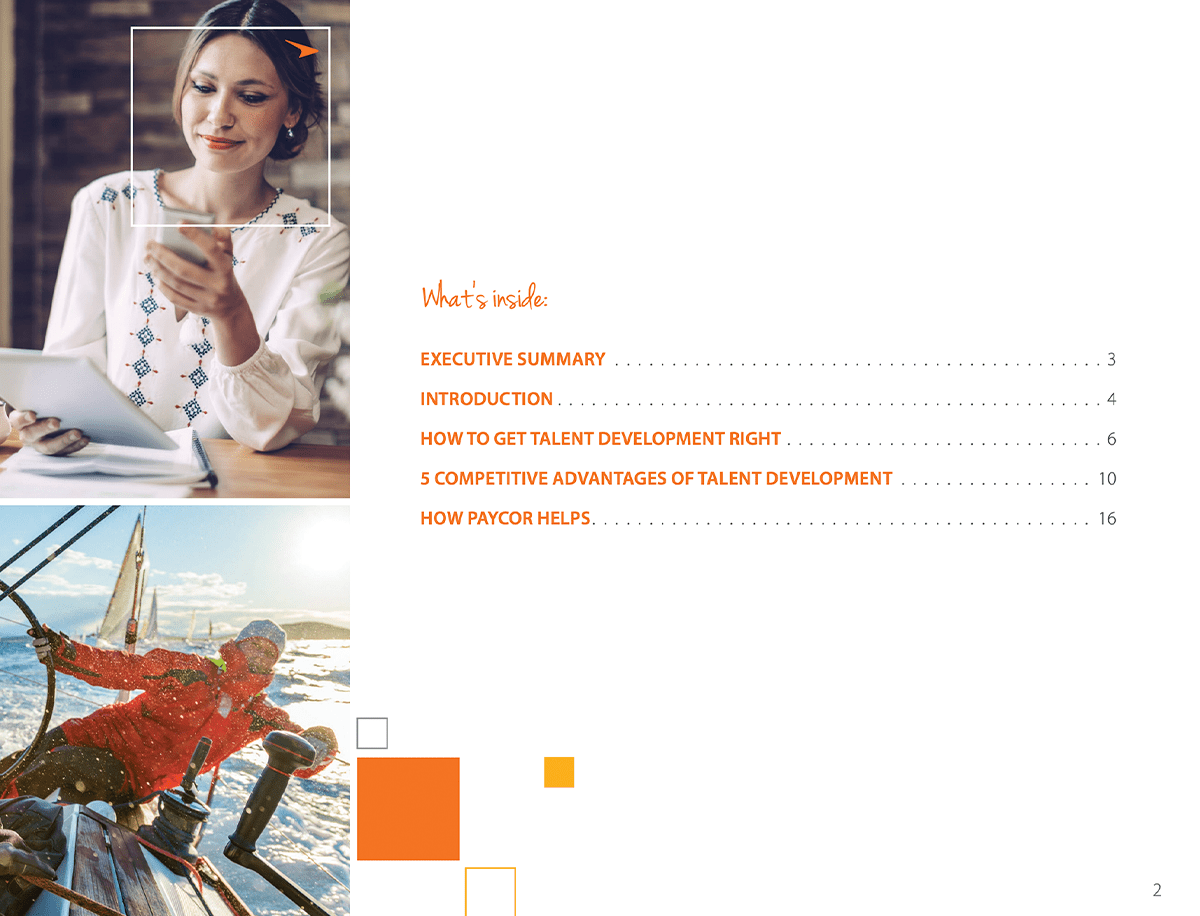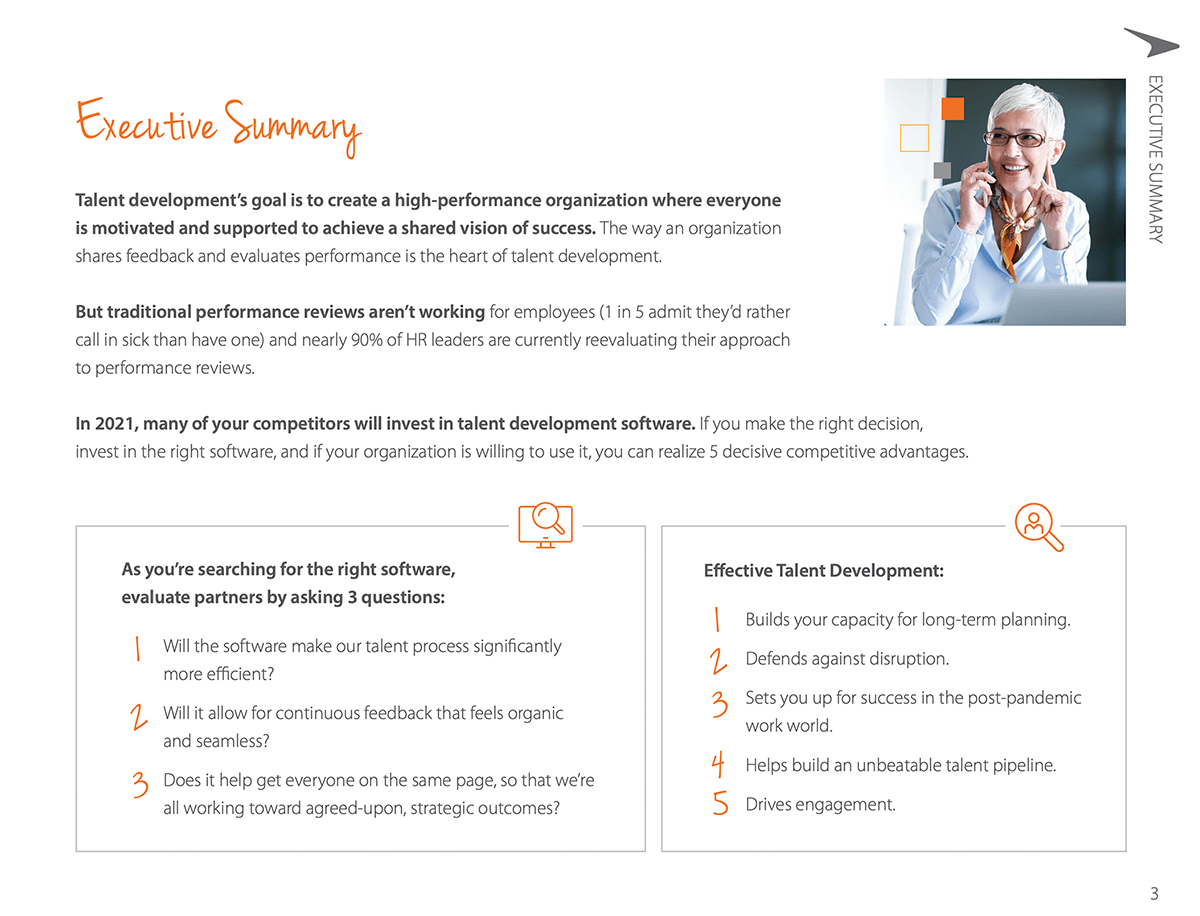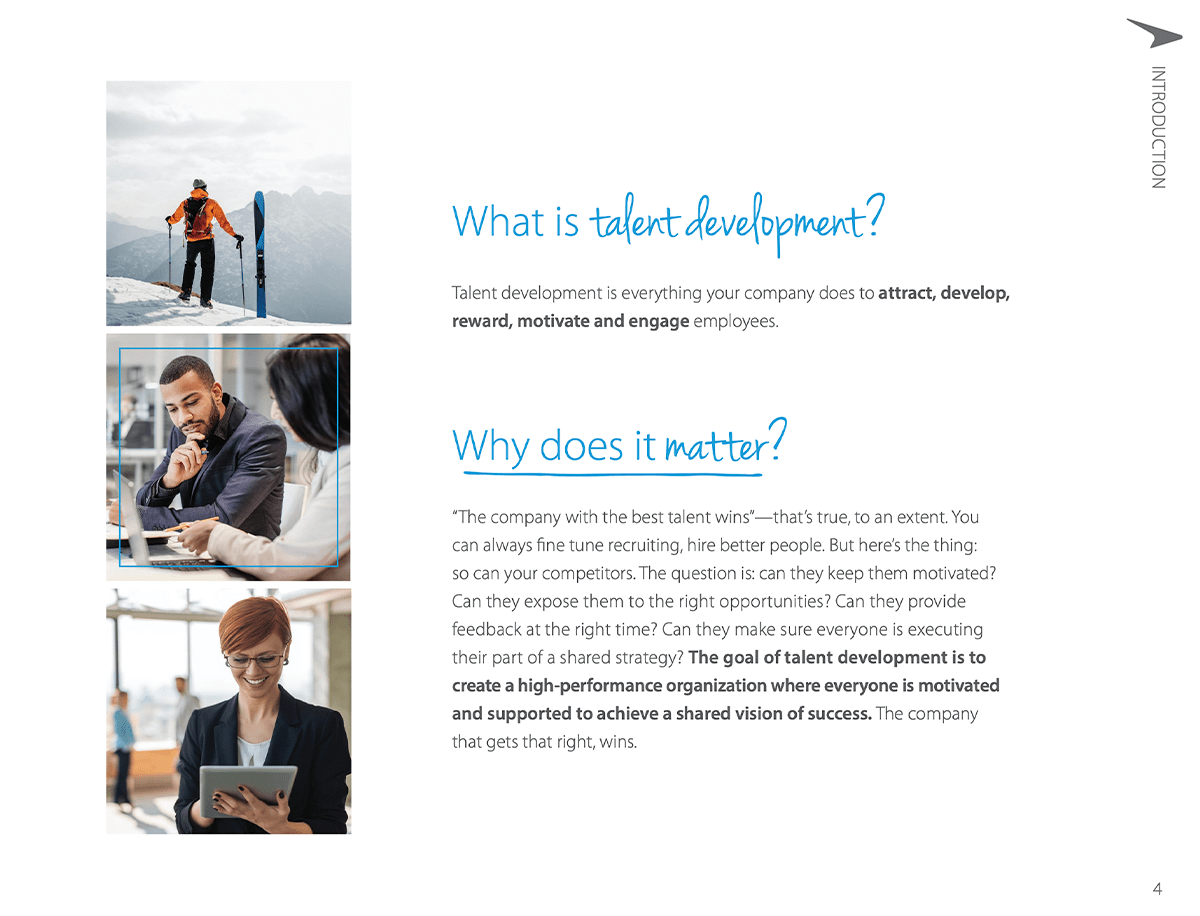
Talent Development Could be Your Secret Weapon
If the saying is true, and “the company with the best talent wins,” you’ll want to invest in talent development. Get what you need to ensure you can provide feedback at the right time, keep employees motivated and expose them to the right opportunities.
Get tips and answers to pressing questions about talent development:
- Why is talent development important?
- How to get talent development right.
- What are the 5 competitive advantages?












